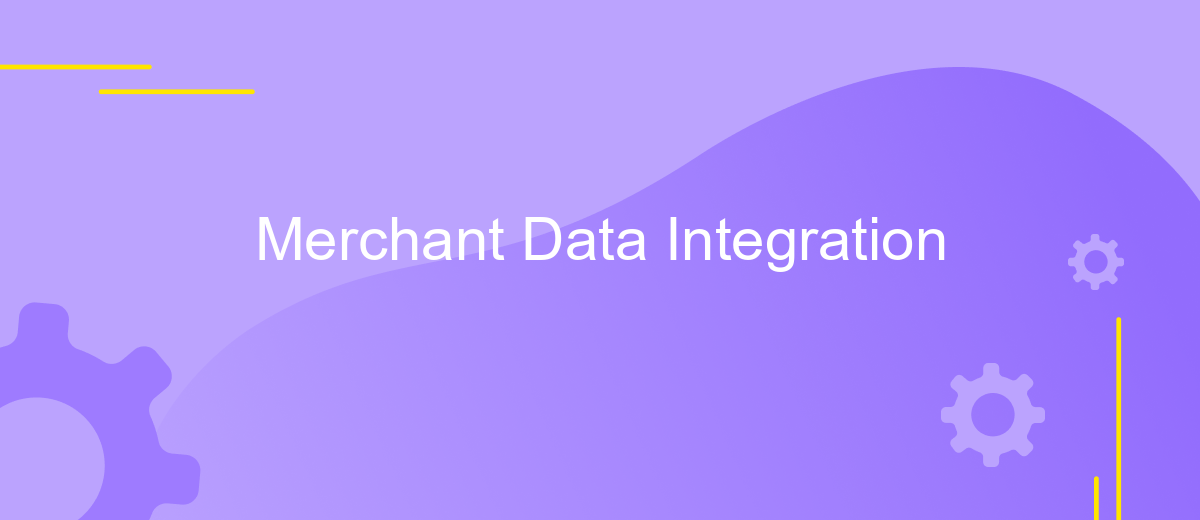Merchant Data Integration
In today's rapidly evolving digital marketplace, efficient merchant data integration is crucial for businesses striving to stay competitive. By seamlessly merging diverse data sources, companies can enhance operational efficiency, improve customer experiences, and drive informed decision-making. This article explores the key benefits, challenges, and best practices for implementing robust merchant data integration strategies that can transform your business operations.
Introduction
Merchant Data Integration is a critical aspect of modern e-commerce, providing seamless connectivity between various sales channels, payment gateways, and inventory management systems. As businesses expand their online presence, the ability to integrate merchant data efficiently becomes essential for operational success and customer satisfaction. This process involves synchronizing data from multiple sources to ensure accuracy and consistency across platforms.
- Improved data accuracy and consistency
- Enhanced customer experience
- Streamlined operations and reduced manual effort
- Better inventory management
- Increased sales and revenue opportunities
In this article, we will explore the various techniques and best practices for effective merchant data integration. We will discuss the challenges businesses face during the integration process and how to overcome them. Additionally, we will highlight the tools and technologies that can facilitate smoother data integration, ultimately driving business growth and efficiency.
Data Sources and Collection

Merchant data integration relies on a variety of data sources to ensure comprehensive and accurate information collection. Key sources include transactional data from e-commerce platforms, customer relationship management (CRM) systems, and point-of-sale (POS) systems. Additionally, data from third-party services like payment gateways, shipping providers, and inventory management systems play a crucial role in creating a unified data repository. This diverse array of data sources helps in providing a holistic view of merchant activities, enabling better decision-making and strategic planning.
To streamline the integration process, various tools and services can be employed. ApiX-Drive, for instance, offers a seamless way to connect multiple data sources without requiring extensive technical expertise. By automating data collection and synchronization, ApiX-Drive minimizes manual intervention and reduces the risk of errors. This ensures that data is consistently up-to-date and readily available for analysis, thereby enhancing the overall efficiency of merchant data integration efforts.
Data Transformation and Processing

Data transformation and processing are critical steps in merchant data integration, ensuring that data from diverse sources is harmonized and ready for analysis. This phase involves converting raw data into a structured format that can be easily understood and utilized by downstream applications. By implementing robust data transformation techniques, businesses can enhance data quality, consistency, and reliability.
- Data Cleaning: Removing duplicates, correcting errors, and filling in missing values to ensure data accuracy.
- Data Normalization: Standardizing data formats and units to facilitate comparison and aggregation.
- Data Mapping: Aligning data fields from different sources to a common schema for seamless integration.
- Data Enrichment: Adding external data sources to enhance the context and value of the existing data.
- Data Aggregation: Summarizing data to provide a consolidated view for analysis and reporting.
Effective data transformation and processing not only streamline data integration but also empower businesses to make informed decisions based on high-quality data. By leveraging these steps, organizations can unlock the full potential of their merchant data, driving operational efficiency and strategic insights.
Integration with Payment Platform

Integrating merchant data with a payment platform is a critical step in streamlining transactions and ensuring seamless operations. The process involves synchronizing data between the merchant's system and the payment gateway, enabling real-time data exchange and accurate transaction recording. This integration not only enhances efficiency but also improves the overall customer experience.
To achieve a successful integration, merchants must consider several key factors. First, the compatibility of the payment platform with the merchant's existing system is essential. Second, data security and compliance with industry standards must be prioritized to protect sensitive information. Lastly, the integration process should be thoroughly tested to identify and resolve any potential issues before going live.
- Ensure compatibility between systems
- Prioritize data security and compliance
- Thoroughly test the integration process
By adhering to these guidelines, merchants can achieve a smooth and efficient integration with their chosen payment platform. This not only facilitates better transaction management but also builds trust with customers, ultimately contributing to the merchant's long-term success.


Analytics and Reporting
Effective analytics and reporting are crucial for the successful integration of merchant data. By leveraging advanced tools and platforms, businesses can gain valuable insights into their sales performance, customer behavior, and market trends. Comprehensive reporting enables merchants to make data-driven decisions, optimize their strategies, and improve overall operational efficiency. For instance, platforms like ApiX-Drive can streamline the integration process, ensuring that data flows seamlessly between various systems and providing real-time analytics to monitor performance metrics.
Utilizing robust analytics and reporting tools also allows merchants to identify potential issues and opportunities in their operations. Detailed reports on sales trends, inventory levels, and customer preferences can help businesses adjust their marketing strategies and inventory management to better meet customer demands. With the help of integration services like ApiX-Drive, merchants can automate data collection and analysis, reducing manual efforts and minimizing errors. This not only saves time but also enhances the accuracy and reliability of the insights derived from the data.
FAQ
What is Merchant Data Integration?
Why is Merchant Data Integration important?
How can I automate Merchant Data Integration?
What challenges might I face during Merchant Data Integration?
How can I ensure data security during integration?
Apix-Drive is a universal tool that will quickly streamline any workflow, freeing you from routine and possible financial losses. Try ApiX-Drive in action and see how useful it is for you personally. In the meantime, when you are setting up connections between systems, think about where you are investing your free time, because now you will have much more of it.

